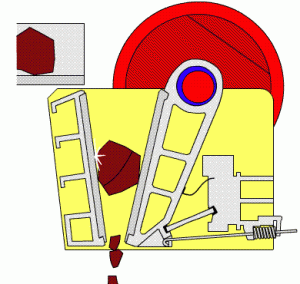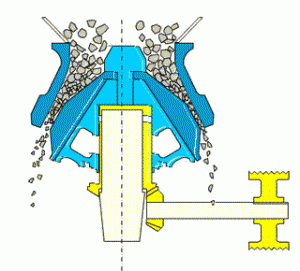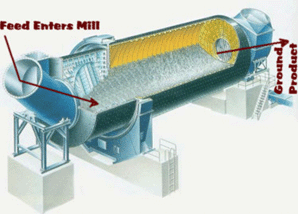The crusher is a machine that is designed such that to reduce the size of large rocks into smaller rocks like gravels. It is not only for that, but it is also used for recycling of the waste materials. Crusher is a multi-dimensional machine. Crusher has the ability of changing the form of material. In rock ores, crusher is used for the reduction in size or for making pieces of a solid mix i.e., composed of different raw materials and these pieces are used for the composition study of different raw materials.
Selection of Crushing Equipment
Selection of crusher is quite a complicated process because of the availability of many kinds of crusher in the market. So, during selection keep following points in mind and find whether the crusher is able to do these specific functions or not.
- Type of material to be crushed with the crusher
- The maximum size of the stones that crusher is able to face
- Feeding method to the crusher
- Capacity per hour, capacity per day of the crusher
- Efficiency of the crusher
If someone selects a crusher that has more capacity than his requirements, then it will be uneconomical. This is so because as crusher size increases, its fuel burning rate and maintenance cost will be more.
Types of Crusher
There are three types of crusher. Types of crusher depend on the feeding method. These are;
- Primary crusher
- Secondary crusher
- Tertiary crusher
Primary crusher has the ability to receive the crushing material (a material that has to be crushed) directly from the source i.e., quarry that’s why these types of crusher are fixed from where the material is taken. Primary crusher is only for the breaking of large stones into pieces (this mean primary crusher is not for the aggregate size material.). Examples of primary crushers are jaw crusher; hammer mill crusher and gyratory crusher. After receiving primary crusher crush the material and produce a new fresh reduce size of the source material. Primary crusher has only functioned up to that point.
Now a secondary crusher comes into action and further reduces the size. In secondary crusher some sizes of stones may pass directly from sieve number 4. Examples of secondary crushers are cone crusher, roll crusher and hammer mill crusher.
At the end tertiary crusher reduces the size of crushed pieces very much to the required size and it also brings the fineness to the crushed material. Tertiary crushers are at the job site and these are small in size. The material is first transported from source with the help of a dump truck. Some tertiary crushers are roll crusher, rod mill crusher and ball mill crusher.


